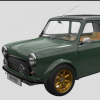So now I'm really confused again :) It looks from that post about the flare types that if I do the first operation with my tool, that's actually a "double flare". If it then turn the tool around and do the second operation, I have an "inverted" flare. Is this right?
Correct.
Those are the Terms used by the SAE and the only ones I use.
I have seen in particular the 'double flare' term interchanged with an invert flare may times - as per Bobbin's post above (and note that is not from the standards) - and as you can see, from the SAE and BMC Standards, they are very different things.
Most tooling works as you have said, first operation is to make a Double Flare then if it's needed, from the Double Flare, form an Invert Flare. I have a few tools for making them, they all work this way.
Thank you for clearing this up! I will try to remember. The confusion arises I think because you do two operations with the tool to get the inverted flare, and that feels like "double" of something, and like if you only did the first bit you would have a "single" flare.
I used inverted flares everywhere on my car, including both sides of an inline junction, which probably should have been double into inverted. But it's not leaking.


















